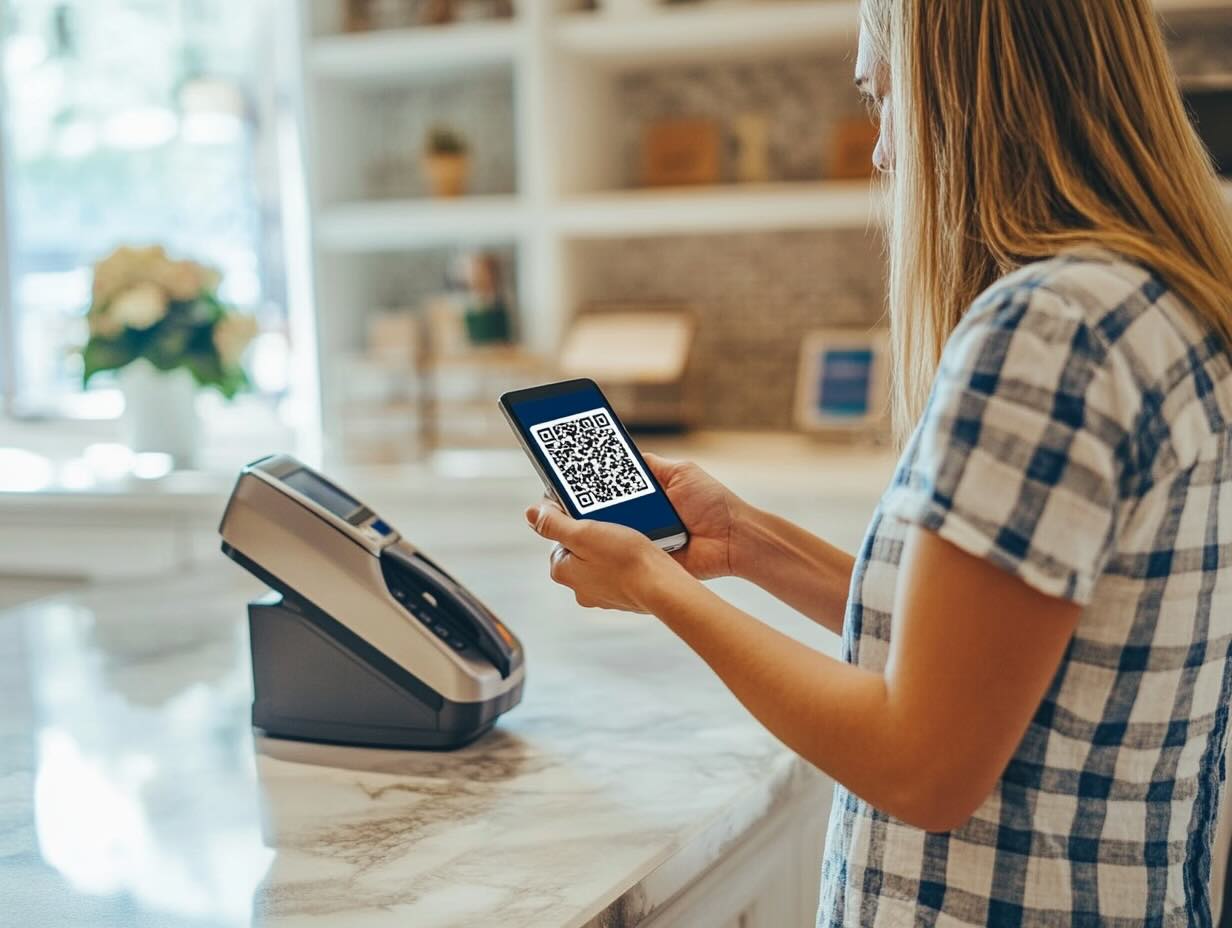A QR code is a two-dimensional barcode that is easily read by smartphones and other devices. Due to its structure, it stores information horizontally and vertically, which allows you to place more data in a smaller area compared to a linear barcode.
The abbreviation QR stands for quick response, which means “fast response”. This emphasizes the main advantage of QR codes – instant reading of information. Instead of entering a long URL manually, you just need to scan the image with your phone’s camera to immediately get to the desired page.
Using an online QR code generator, you can easily convert data into a code that is scannable by your smartphone for instant access and easy information sharing. With advances in recent years, these tiny pixels can facilitate a variety of transactions, such as payments, website access, mobile advertising, and more.
How a QR Code Works
A QR code is designed to encode and store information for subsequent reading. Modern algorithms for image processing and data decoding perform this process in a fraction of a second, sequentially going through several stages. Let’s consider what happens at each of them.
- Image capture. The device’s camera captures an image of the QR code. Here, the clarity of the picture and uniform lighting are important – this will help to avoid glare and blurring, which make it difficult to recognize elements.
- Boundary and orientation detection. The scanner finds three search patterns that allow you to determine its orientation and approximate boundaries. Additional accuracy is provided by the “quiet zone” – it helps to separate the code from the background and prevent recognition errors.
- Version and format analysis. The device determines the size of the data matrix, the level of error correction and the template mask used.
- Geometric correction. Alignment patterns and synchronization stripes help eliminate image distortions and ensure accurate positioning of all elements. This is especially important if the code is scanned at an angle, on a curved or uneven surface.
- Mask removal. The program analyzes the template mask type based on the format information and removes it from the data matrix. This allows you to restore the original distribution of black and white modules, ensuring the correct interpretation of the encoded information.
- Data decoding. After removing the mask, the scanner sequentially reads the bits of information according to a specified algorithm and processes the data in blocks. The error correction system is also activated, correcting code damage. As a result, the program restores the original byte sequence for further use.
QR Code Combinations with Other Technologies
The QR code quickly took hold in the automobile industry. This was especially important at the time, as many Japanese consumers were demanding greater transparency from large corporations. They wanted to know exactly where their products were coming from – not just cars, but also food, medicine and other products. So the QR code gradually penetrated all sectors of industry.
Its creators, Denso Wave, were generous in making the technology for creating and reading QR codes publicly available and waiving their patent rights. This means that even today, anyone can create and use their own QR code.
QR codes are actively used to simplify cryptocurrency transactions. Thanks to the blockchain, they become a reliable and secure payment tool.
Devices like smartwatches and fitness trackers have the ability to engage with QR codes. However, by integrating QR codes with voice assistant technology, users can interact with the codes through voice commands.
For those seeking an easy way to create codes for such advanced uses, an online QR code generator offers the flexibility to generate static or dynamic codes suitable for a variety of applications.
Future of QR Codes: Technological Developments and Applications
Here are some predictions of QR codes:
1. More security features:
QR codes will further develop security measures and protection mechanisms in the future. Bad: Additional encryption and authentication features can be added to QR codes to prevent malicious use.
2. Augmented reality (AR) integration:
QR codes can offer a more interactive experience through augmented reality technology integration. For example, when scanning a QR code, users can view 3D models of products or interactive visuals.
3. NFC and digital wallet integration:
Beyond QR codes, the expansion of integration with other payment and authentication new QR code technology, such as NFC (Near Field Communication) and digital wallets, can enhance transaction speed and security. This synergy allows for smoother and more efficient payment processes.
4. Sustainability and digital transformation:
QR codes are used digitally to reduce paper waste and promote sustainability. It can be used more widely as part of the transformation. Digital QR codes instead of traditional printing and packaging materials help save resources.
Conclusion
Thus, the future of QR codes will be driven by technological innovation and will have a wider range of uses. When using a QR code, there are fewer errors than when using a linear barcode. Its technology allows you to read the code even if it is upside down and part of it is erased. During the pandemic, most people have programs for scanning the code. Due to such popularity and ease of use, QR has become a good way to attract attention to Internet projects, and users no longer need to remember complex web addresses. Popular social networks have already introduced the ability to find personal pages not by long digital IDs, but with the help of QR.
To explore and create innovative QR codes for your needs, consider using an online QR code generator, ensuring a seamless and efficient experience.

